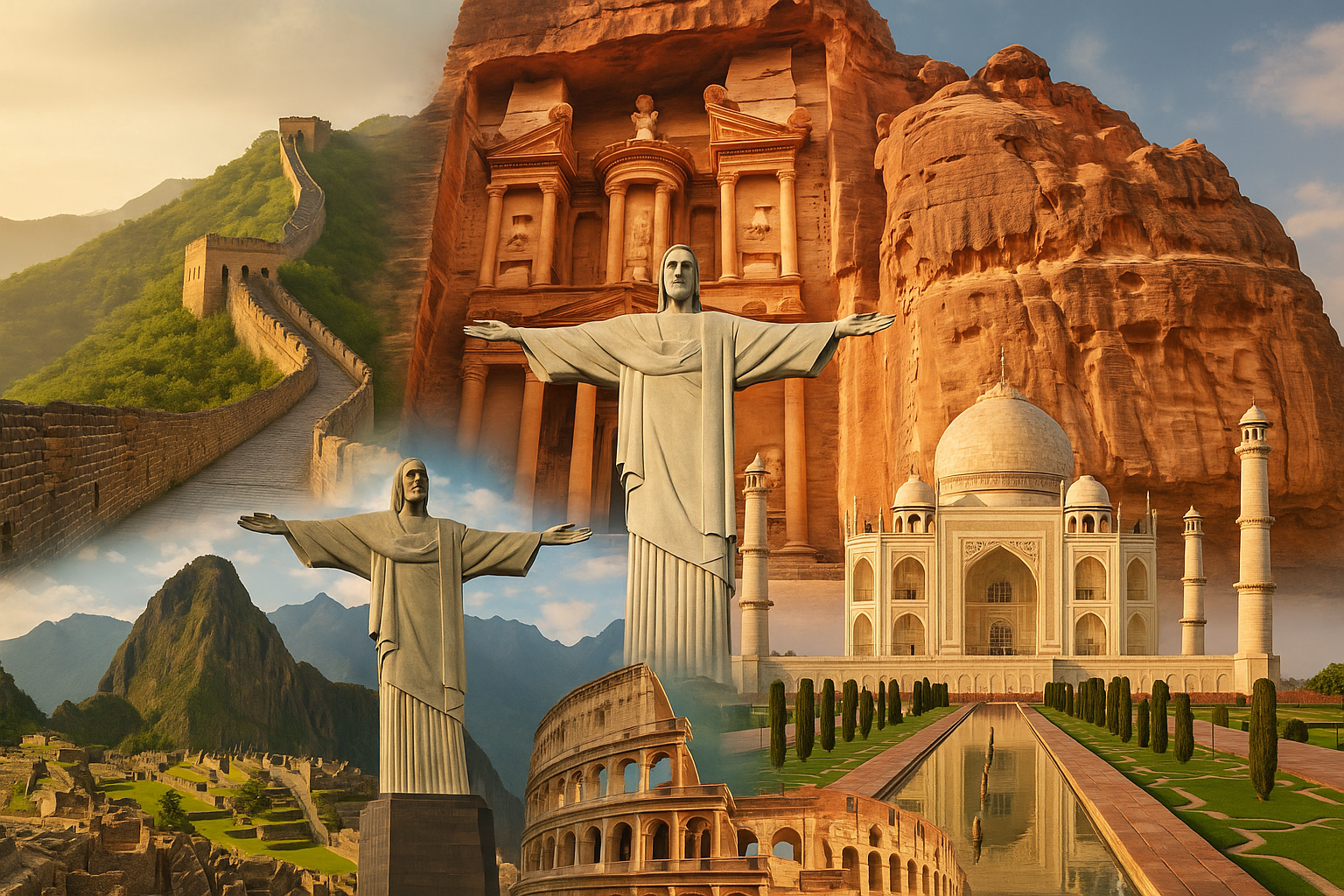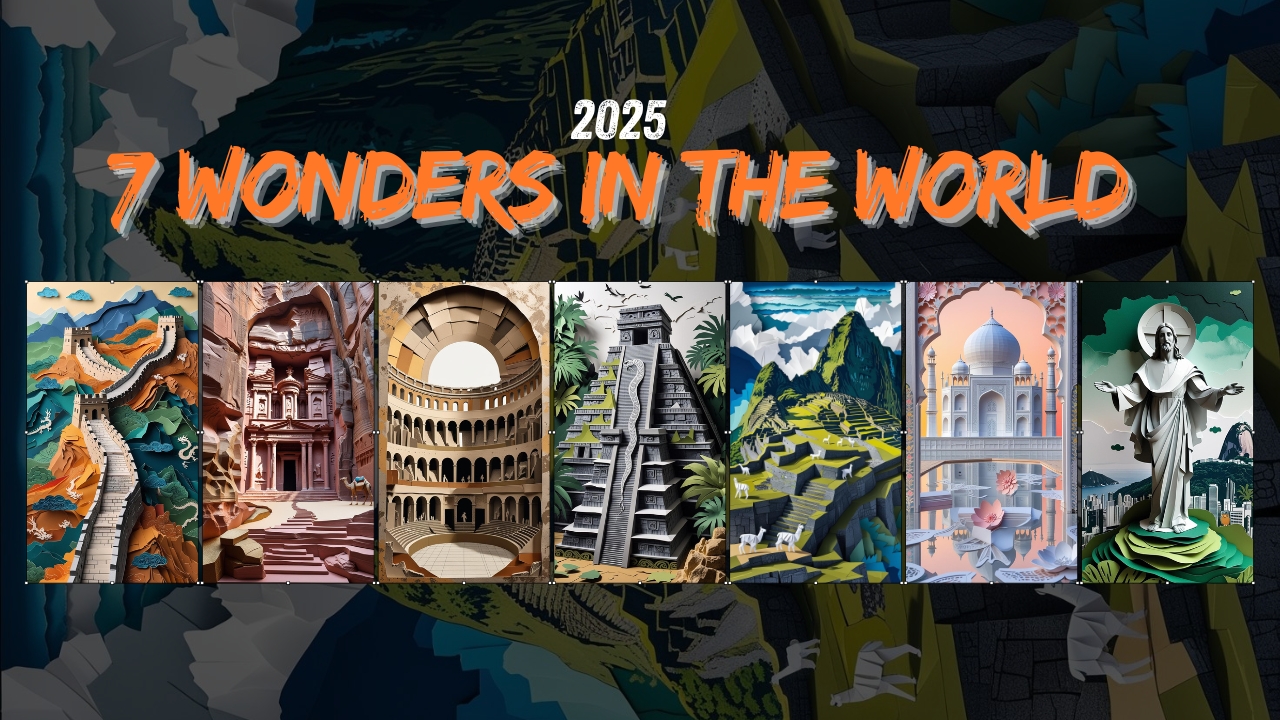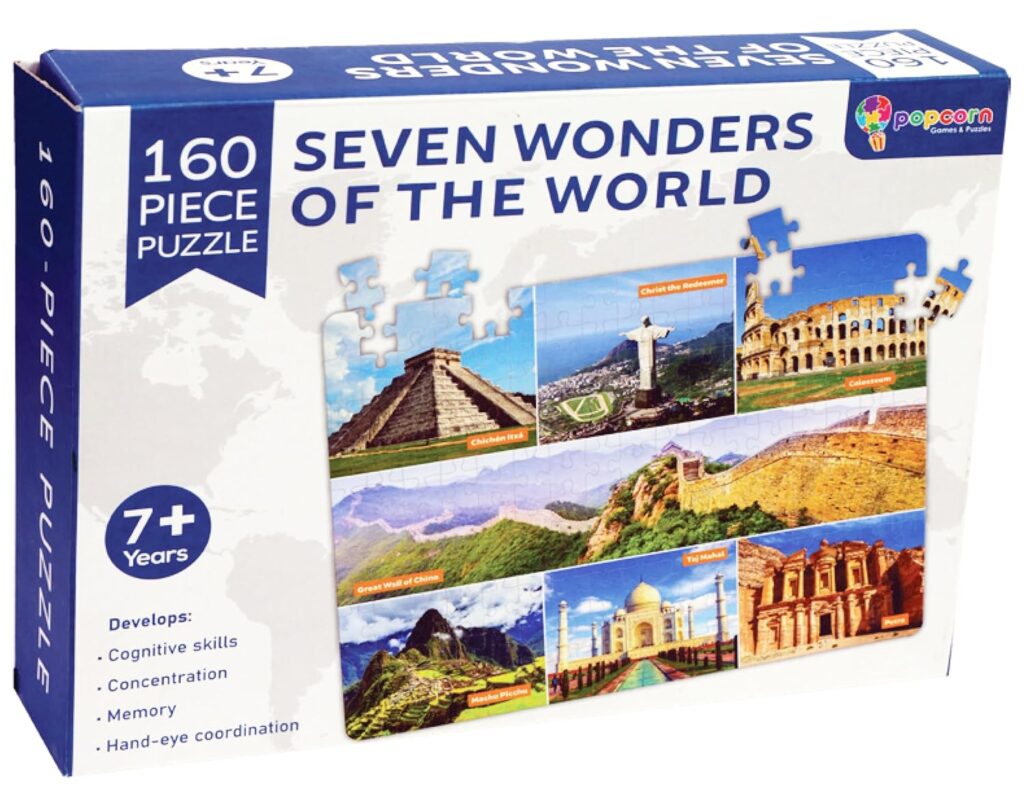Journey Through the New Seven Wonders of the World
The New Seven Wonders chosen in the 2007 global poll stand on four continents, span twenty-two centuries, and together attract millions of visitors each year. From desert canyons to Himalayan foothills, each site illustrates a different chapter in humanity’s architectural, artistic, and spiritual story.

Collage of the New Seven Wonders of the World
1. Great Wall of China (China)
Stretching over 20,000 km, the wall began as disconnected fortifications in the 7th century BC, was first unified under Emperor Qin Shi Huang (221–206 BC), and reached its iconic brick-and-stone form under the Ming dynasty (1368–1644). Though never completely impenetrable, it served as a psychological barrier, customs corridor, and potent symbol of Chinese sovereignty.
Travel tip: The most visitor-friendly Ming sections are Badaling and Mutianyu near Beijing; venture further to Jinshanling or Jiankou for quieter, rugged scenery.
2. Petra (Jordan)
Carved directly into rose-red sandstone cliffs, Petra flourished as the Nabataean capital and caravan hub between c. 300 BC and AD 100. Mastery of rainwater harvesting let the city bloom in the desert; its monumental façades—especially the Treasury—blend Hellenistic and Near-Eastern styles. Roman annexation, a major earthquake (AD 363), and shifting trade routes triggered gradual decline until Swiss explorer J. L. Burckhardt “rediscovered” it in 1812.
Travel tip: Hike the High Place of Sacrifice or the steep trail to the Monastery for sweeping views beyond the main Siq corridor.
3. Christ the Redeemer (Brazil)
Rio de Janeiro’s 30 m–tall Art Deco Christ with 28 m outstretched arms was completed in 1931 after nine years of construction led by engineer Heitor da Silva Costa and sculptor Paul Landowski. Built of reinforced concrete clad in six million soapstone tiles, the statue symbolizes peace and an open embrace of all who enter Rio.
Travel tip: Time your visit for sunrise or sunset; take the Corcovado rack railway through Tijuca Forest for a scenic ascent.
4. Machu Picchu (Peru)
Perched 2,430 m above sea level, the Inca royal estate (c. 1450–1530) showcases dry-stone ashlar masonry so precise that even seismic tremors leave walls standing. Hidden from Spanish invaders, it remained largely unknown to the outside world until Yale historian Hiram Bingham’s 1911 expedition. Key sights include the Intihuatana stone and the Temple of the Sun.
Travel tip: Permit quotas limit daily visitors; book months ahead for the Inca Trail or the Huayna Picchu climb.
5. Chichén Itzá (Mexico)
This Maya–Toltec metropolis thrived c. AD 600–1200 and dazzles with syncretic architecture such as the Pyramid of Kukulcán (El Castillo), whose 365 steps echo the solar year. During equinox sunsets, a serpent-shadow appears to slither down its balustrade—a testament to Mesoamerican astronomical skill. Nearby are the Great Ballcourt, the Temple of the Warriors, and the sacred cenote where offerings were cast to appease Chaac, the rain god.
Travel tip: Arrive at opening time to beat bus-tour crowds and Yucatán heat; stay for the evening light-and-sound show.
6. Colosseum (Italy)
Rome’s Flavian Amphitheatre, finished in AD 80, seated up to 80,000 spectators for gladiatorial combats, animal hunts, and even mock naval battles when the arena was flooded. Built of travertine, tuff, and concrete, the oval structure measures 189 × 156 m and rises 50 m. Despite earthquakes, medieval quarrying, and pollution, it endures as the emblem of Imperial Rome.
Travel tip: Book a guided tour that includes the hypogeum (underground staging area) and upper tiers for a full perspective on ancient crowd engineering.
7. Taj Mahal (India)
Commissioned by Mughal emperor Shah Jahan in 1632 to memorialize his wife Mumtaz Mahal, the ivory-white mausoleum complex took about 22 years and 20,000 artisans to complete. Chief architect Ustad Ahmad Lahauri fused Persian, Indian, and Islamic elements; pietra-dura floral inlays, perfect symmetry, and a reflecting pool create the illusion of a heavenly abode on earth.
Travel tip: Visit at dawn for ethereal peach-pink marble tones, then cross the Yamuna to Mehtab Bagh for a serene rear view at sunset.
Practical Advice for Wonder-Seekers
| Wonder | Best months | Entry essentials |
|---|---|---|
| Great Wall | Apr–May & Sep–Oct | Wear sturdy shoes; carry cash for the cable car |
| Petra | Mar–May & Sep–Nov | Jordan Pass covers visa and entry |
| Christ the Redeemer | May–Oct | Timed-entry ticket |
| Machu Picchu | Apr–Oct | Passport and pre-booked ticket; altitude prep |
| Chichén Itzá | Nov–Mar | Sun protection; certified guide |
| Colosseum | Mar–May & Oct–Nov | Combined ticket for Forum and Palatine |
| Taj Mahal | Oct–Mar | Small bags only; closed Fridays |



